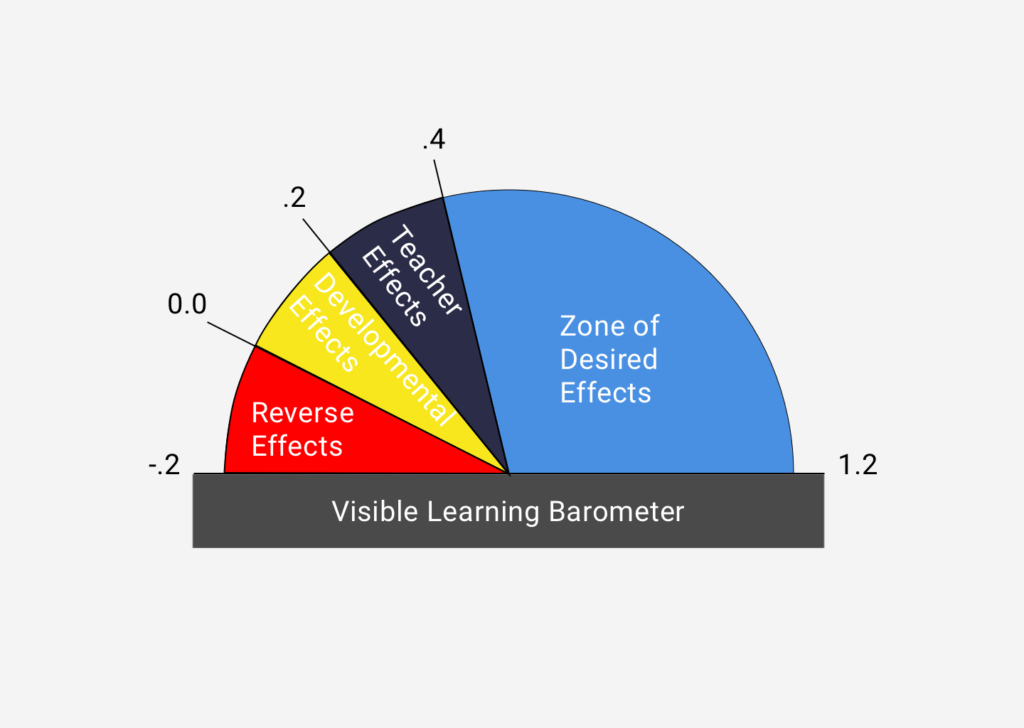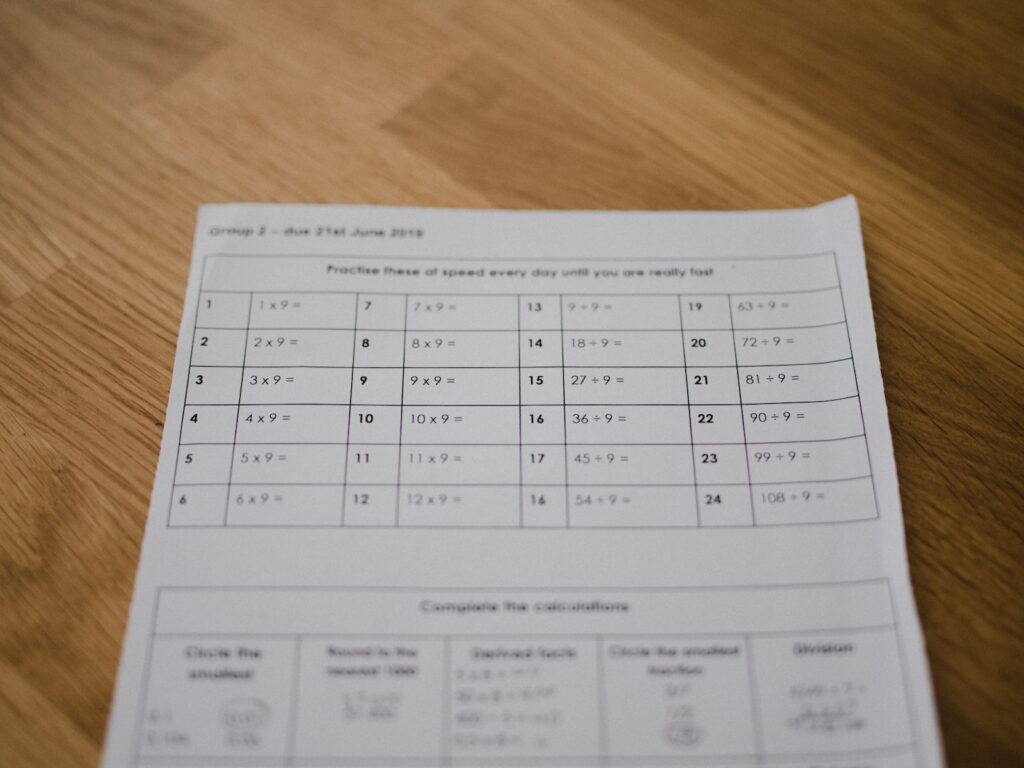Every influence has an effect.
This simple tautology sometimes gets lost in the many debates about what works in education. Nearly everything works – sometimes for the good, sometimes for the bad – but the act of doing something produces an outcome.
Everything might work. But is it worth it?
Say, for example, that this amazing computer program was found to be statistically significant in changing student achievement. Sounds good, you’d say to yourself, and you consider purchasing or adopting it. But then you learn that it only increased students’ performance by 3 points on a summative assessment (and the research had data from 10,000 students). If it were free and easy to implement this change, it might be worth it for students to get a tiny bit better scores. But if it were time-consuming, difficult, or expensive, you should ask yourself it to go through all of this trouble for such a small gain.
That gain, quantified, is the effect size.
[The effect size] represents the magnitude of the impact that a given approach has. We think about it like the Richter scale, which is used to measure earthquakes. In California we have about 10,000 earthquakes per year. But we don’t feel all of them because their impact is small. They register very low on the Richter scale. In the language of learning, they have very minimal effect.
Visible Learning for Social Studies by John Hattie, Julie Stern, Douglas Fisher, and Nancy Frey
As with many things in life, the question boils down to, “How should I spend my time?”
Time Consumption
I once participated in a committee tasked with determining a change in the start times of schools. We held engagements, read piles of emails, listened to passionate parents who attended board meetings, and sank hours and hours into shifting start times by 30 minutes. The experience was not acrimonious (well, not very) and generally resulted in building better bonds within the school community.
Which would be fine if that was the point of the experience. But our stated goal was to make the change to improve academic performance for our students.
Was it worth the time when the effect size of modifying the timetables of school results in an effect size of .09 (recall that we generally view an effect size of .4 or higher to have a sizable impact)?
My point with this post isn’t to stir up controversies. I believe it prudent to ask, before starting a process, “Is it worth it? If so, why?” Nearly everyone develops opinions about education through their experiences, shaped by time spent as a student, family member of a student, or through cumulative years of teaching. As humans, we form opinions based on these experiences. But learning is very human as well. We can change our views.

The Top 5
With all that said, there are a few significant areas that education spends an enormous amount of time, energy, and money on, which we should handle with caution.
Homework
The homework debate is legendary. We have books, articles, studies, and opinions examining all aspects of homework. Parents, students, and teachers feel incredibly passionate about homework (for and against). I suspect it’s one of the top time-consuming discussion topics in schools. Just learning a million new homework policies every year with each new teacher takes forever. Some teachers, parents, and students expect massive amounts of homework. Some expect none to very little. Everyone has an opinion.
According to Hattie, homework has an effect size of 0.29.
There are nearly a hundred different influencers on favorable academic growth rates higher than homework. Whatever a person’s stance on homework is, it should be weighed against the return homework delivers vs other important factors.
Teacher Subject Matter Knowledge
A teacher may have graduated from Harvard, studied art history in Florence, and written a Ph.D. thesis on Henry the VIII. Yet subject level expertise does not translate into academic growth for students. The art and science of teaching is far more critical.
Teacher subject matter only has an effect size of 0.11.
Teacher Performance Pay
What about tying teacher pay to the academic performance of their students? Might teachers work harder if they know they’ll get a bonus?
No. The effect size is a measly 0.05.
Teacher performance pay is a controversial subject for a host of reasons. At a bare minimum, it takes a considerable amount of time to build consensus on its implementation. Given it returns very little, a school community may want to focus on what delivers better academic growth (see Part 1 of this series).
Student Control Over Learning
Student control has a more nuanced meaning than simply giving students agency in their learning (which we correlate to a high effect size). Hattie defines student control over learning as providing students control of the next steps of learning.
Consider the classic “write your own constitution” teaching assignment. If a teacher simply says, “Your assignment is to write a functional constitution,” without any background knowledge, students will ultimately flounder. What does that mean? What does a constitution do? How are they written? What types of government are there? How might they operate?
For most of us, when we reach the edge of what we know and can do, we need expertise to optimally help us work out the next steps. There are too many blind alleys in next steps and it is not efficient and, in some cases, can turn students off the challenge of learning, if we make them take too many blind alleys. While many teachers use the notion ‘we want students to have control over their learning’ they usually do this by offering (few) choices— what do you think about doing this or that?
Student control over learning has a small effect size of 0.02.
School Calendars
Much debate is given to a school calendar, as it affects many different areas of life, particularly child care. Interestingly, it only has an effect size of 0.09. During which months schools start and stop doesn’t have much of an impact on academic performance.
Teaching as a Science
We continue to learn more about how our minds work and the most effective strategies for learning. No doubt we’ll see some very insightful studies (for good or for ill) coming out of this pandemic period. Keeping an open and attentive mind to what works better in education helps the education community spend time prudently growing students.
Related Posts
- What Works in Education. The Parent Guide.
- What Works in Education: A Guide for Teachers
- What Works in Education: A way to Answer the Question
Related posts:
Best Practices for What Works in Education. The Parent Guide.
What are the best practice teaching strategies for parents working with their children at home? We consider five simple approaches to helping students learn outside of the classroom....
What Works in Education? A Guide for Teachers
What are the biggest influencers of academic growth? We examine what works especially when it comes to making instructional decisions as a teacher....
What Works in Education? A Way to Answer the Question.
Is there a way to know what works best in education? Yes! We can examine meta-studies to determine what provides the biggest academic outcomes in education....

